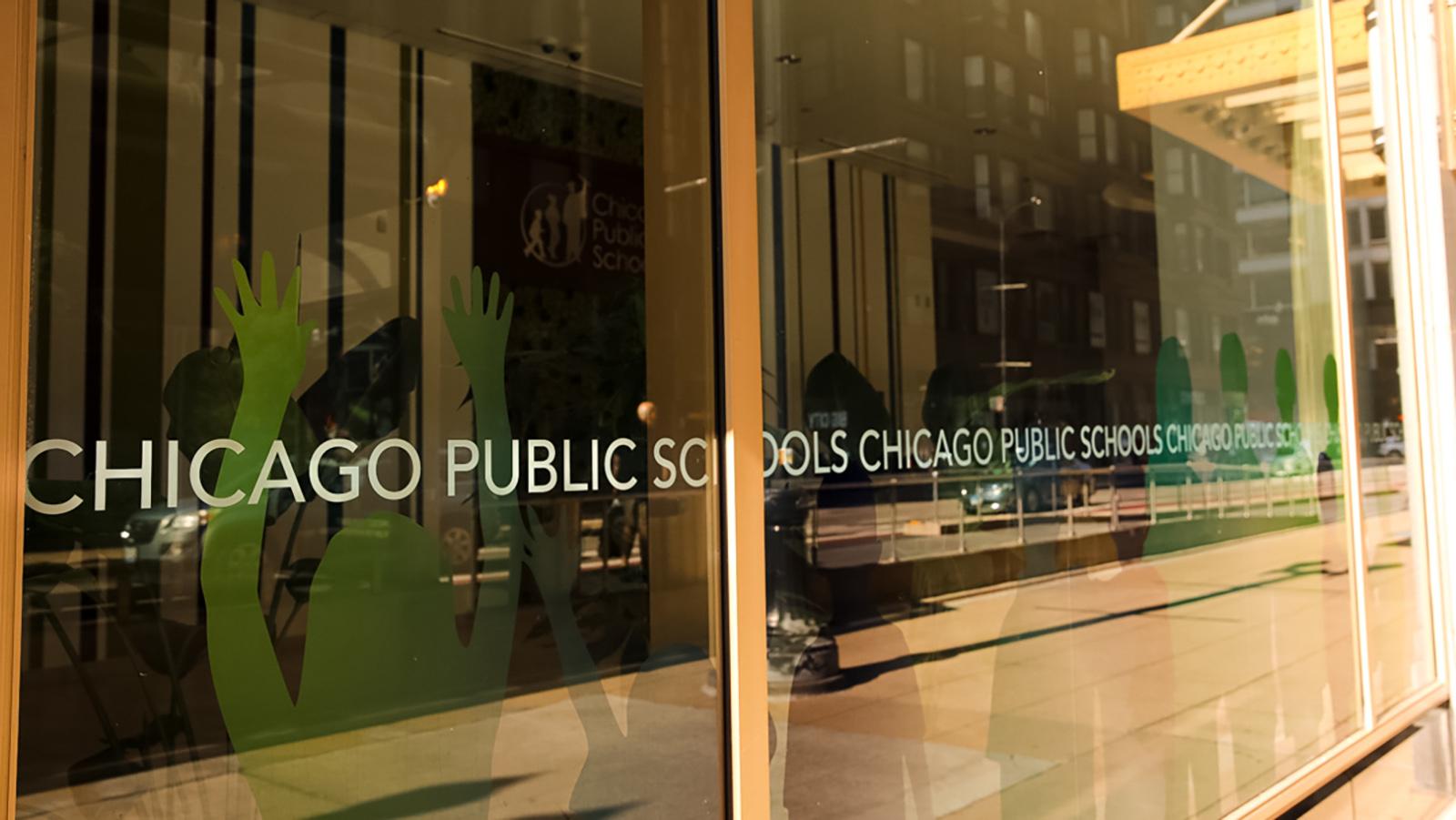 Chicago Public Schools headquarters. (Michael Izquierdo / WTTW News)
Chicago Public Schools headquarters. (Michael Izquierdo / WTTW News)
The end to mayoral control of the Chicago Board of Education could come sooner than expected.
Chicago’s mayor has long had the power to appoint a president and board members, but under a 2021 state law the city will move to an elected school board.
The original plan had been to ease into it, with a board in 2025 made of half mayoral appointees and half elected board members, before moving to a 20-person wholly elected body come 2027.
But on Tuesday, Illinois Senate President Don Harmon introduced a proposal (House Bill 2233, Senate Amendment 2) that would elect all 20 school board members during the November 2024 election.
Chicago could still go the hybrid route.
State Rep. Ann Williams, head of the House Democrats CPS Districting Working Group, also put out a fresh plan on Tuesday (House Bill 4221) that would elect 10 school board members next year, and the other half in 2026.
Harmon’s and Williams’ plans each carve Chicago into the same 20 districts from which board members would be elected.
But under the version put forward by Williams, two districts would be combined into a super district for the 2024 election, with one appointed and one elected school board member representing each of the ten districts.
The goal, Williams said, is to give all Chicago voters an opportunity to cast a ballot in the first year of an elected school board.
During a Senate committee hearing on Tuesday afternoon, Harmon expressed reservations about the House’s proposed nesting districts model.
“I don’t know any way we could combine those 20 districts into 10 and achieve the same proportionate representation,” Harmon said.
Conversations between both camps continued Tuesday night, with a source close to Harmon describing discussions as ongoing and “in a good place.”
Both of the measures introduced Tuesday allow Mayor Brandon Johnson to keep some initial control over the school board: The mayor is charged with appointing a school board president to a two-year term starting in 2025. Then, in 2026, a citywide election would be held to choose a president who would serve for four years starting in 2027.
Until now, much of the debate on making the transition to an elected school board to govern Chicago Public Schools had centered on the makeup of the districts.
Advocates panned the first two district maps the General Assembly introduced, with complaints that the districts didn’t do a good enough job grouping together Latino voters or Black voters, such that White residents would have an outsized role in determining who’d be elected to the board.
Legislators are now focused on a third map, which has six majority Latino districts, seven majority Black districts, five majority White districts and two “coalition” districts.
That was enough to satisfy some former critics, like Illinois African Americans for Equitable Redistricting founder Valerie Leonard, who said the map before the General Assembly is a “significant improvement” over the first two attempts.
“The districts are more compact and more apparently drawn to optimize the opportunities for minority groups to elect representatives of choice,” Leonard said.
Other advocates, however, said the maps should more closely mirror the population of the CPS student body, which is 47% Latino, 35% Black and 11% White.
“While this is very noble, it’s not constitutional,” Leonard said. “It’s clear that the state legislature did what they could.”
Little Village Community Council President Baltazar Enriquez, however, said he considers the proposed district map an “attack on our community.”
Enriquez said with the influx of asylum seekers, there will be more Spanish-speaking students entering CPS, and the need for more Latinos making decisions about how the district is run will only increase.
“I’ve been through this discrimination, this inequality,” Enriquez said. “It’s ridiculous, there’s six seats for White students when we don’t even have, like, 13% of White students and they have six seats. So there’s the racism right there.”
Lawmakers are likely to finalize plans soon, given that Thursday is the last scheduled session day in 2023, with the election process gearing up not too long after.
Under the measures up for consideration, candidates for school board positions could begin to circulate petitions starting March 26.
Follow Amanda Vinicky on Twitter:@AmandaVinicky










